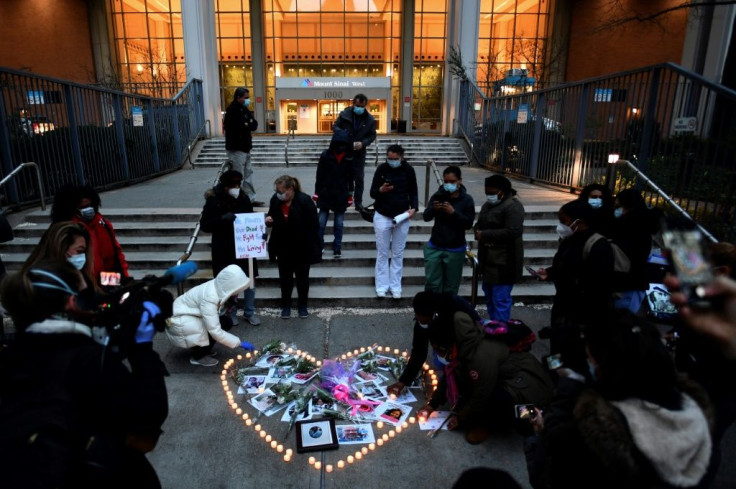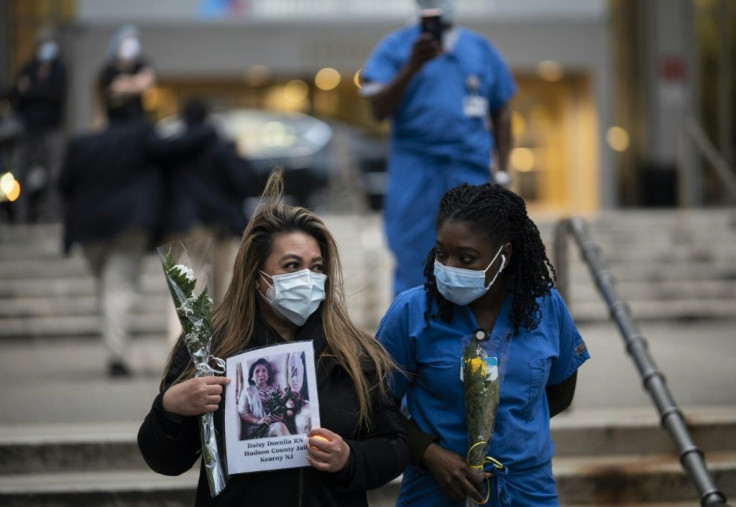Coronavirus Update: Expert Reveals Five Phases Of COVID-19, US Only At Phase Two

KEY POINTS
- The U.S. is about to exit phase two of the COVID-19 cycle and enter phase three marked by greatly expanded laboratory testing
- Phase four will see a vaccine, but in the case of COVID-19, it won't be widely available until 2022
- Then comes phase five, which is making preparation for the next pandemic a national security priority
With more than 560,000 confirmed cases of COVID-19 and over 22,000 deaths as of early Monday (April 13) morning, the United States leads the world in the number of cases and deaths caused by the disease.
But the U.S. in only in phase two of this disease's newly identified five-phase cycle, warned Dr. Gerald Parker, Associate Dean, College of Veterinary Medicine & Biomedical Sciences at Texas A&M, whose area of expertise is COVID-19. In phase two, cases and death counts double exponentially and is usually the most painful and horrific of the five phases.
The end of phase two and the beginning of phase three usually starts with flattening the epidemiological curve, or simply flattening the curve. Then come phase four and five, which aim to make the next outbreak less horrific than the previous one.
COVID-19's new phase one, which is expected this winter, will be bad news because there won't be a vaccine ready for it. This means there will be a re-start to the terrifying COVID-19 cycle all over again. And the casualties and deaths will again be in their tens of thousands in 2021.
Dr. Parker, who once led efforts by the Department of Health and Human Services (DHHS) to prepare for public health emergencies, agreed containment started at the end of January. This was when the U.S. declared a public health emergency, and imposed travel restrictions and travel bans from China to slow the spread of the virus.
Dr. Parker said containment worked, but sometime late February, the U.S. reached an inflection point, which was “community spread.” This massive human-to-human transmission by the thousands overwhelmed the ability of the public health system to accomplish individual, case-by-case containment. Then came phase two, or mitigation, which is where the U.S. is at right now, he told the Houston Chronicle.
"The primary purpose of mitigation is to slow the spread of virus within our communities," said Dr. Parker. "What you're seeing now is a lot of activity to try to prevent our hospitals from being overwhelmed caring for those patients who get really, really sick from COVID."

He said in phase two, Americans are seeing action to mitigate the virus’s economic impact, and to provide economic relief while keeping people employed.
"I’m optimistic that in three to six months we’ll have (a better treatment for coronavirus symptoms), a therapeutic in our toolkit that can rescue those who become severely ill. But it's going to be at least 18 months, I believe, before there's a vaccine available to deploy in any meaningful way."
While the U.S. waits for this vaccine, it will enter phase three, which is basically a second stage of containment. Phase three will be marked by greatly expanded laboratory testing — both antigen and antibody lab testing. This has to occur so scientists "can have a much better view of what's happening in our community. Despite the rapid advancement that's occurred in lab testing over the last month, we're still catching up. And without the lab testing, we're still almost blind to what's really happening in our community."
Dr. Parker described phase four as a third stage of containment once there is a vaccine. Once this new vaccine becomes widely available, people are "going to get into a situation like we're used to with seasonal flu, because I don't think COVID is going away. In fact, I think we should anticipate that we're going to have a second wave in in the fall."
Then comes phase five, which is making preparation for the next pandemic a national security priority.
"Now we know we have to go into Phase Five, pandemic preparedness, with renewed vigor," said Dr. Parker.
© Copyright IBTimes 2024. All rights reserved.





















